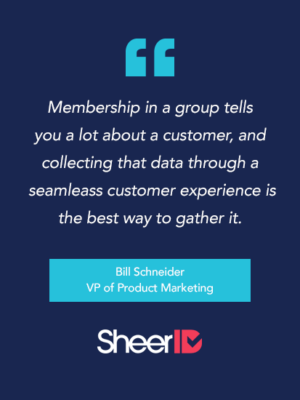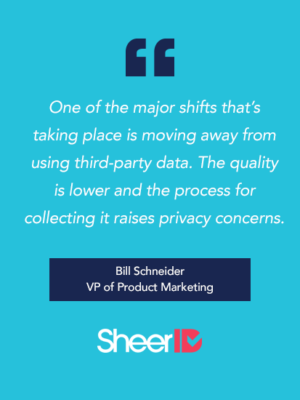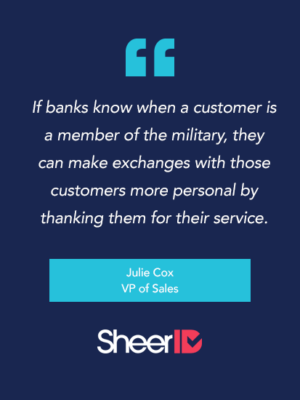Using Zero-Party Data to Create Value for Financial Customers

Data drives personalization, but for campaigns to be effective, you need quality data that’s collected and used responsibly. When it’s not, consumers feel stalked and brands miss an opportunity to create truly inviting experiences.
To learn how this applies to financial services, the Money20/20 podcast “MoneyPot” spoke with two senior leaders at SheerID—Julie Cox, VP of Enterprise Sales and Financial Services and Bill Schneider, VP of Product Marketing—about the benefits of collecting and using zero-party data.
The title of the episode is “Investigating Data to Create Value for Customers,” and you can listen to the full podcast here. Key takeaways from the conversation are summarized below.
Collect Good Data
MoneyPot: Using consumer data to create targeted messages is a highly effective strategy for acquiring new customers—if the data provides meaningful insight. Knowing when consumers belong to a group that is central to their identity can help marketers understand what those consumers want and need, which makes creating personalized experiences for them easier.
Bill Schneider: Membership in a group tells you a lot about a customer, and collecting that data through a seamless customer experience is the best way to gather it. For example, if you make it easy for consumers to tell you they are in the military when they complete a credit card application online, you gather valuable data about them and the process is frictionless. You can then work behind the scenes to leverage that information in your messaging and campaigns.

Respect Privacy by Using Zero-Party Data
MoneyPot: I love having personalized experiences, but not when it feels like I’m under surveillance. There’s a fine line between being helpful and creepy, and sometimes it feels like companies know too much about me. It makes me wary of how brands are collecting my data.
Bill Schneider: One of the major shifts that’s taking place is moving away from using third-party data. The quality is lower and the process for collecting it raises privacy concerns. Apple and Google are moving away from collecting third-party data, and that’s forcing marketers to look for ways to collect first-party and zero-party data, which are higher quality.
MoneyPot: To clarify, third-party data comes from sources where someone beyond the two parties in the transaction is involved, such as credit bureaus, data aggregators, and brokers. First-party data comes directly from the customer, but the data is gathered passively. Zero-party data is when the customer provides the data directly, but for a specific use.
Bill Schneider: That’s right. And having explicit approval from a customer to use their data in a specific way makes that data more valuable.

Use Data to Build Trust and Reduce Risk
MoneyPot: People don’t want their personal data to be treated as a commodity that’s sold without their knowledge. They want personalized experiences, but they want a say in how their data is collected and used to create those experiences. It behooves financial marketers to focus on building this richer, more trustworthy relationship with their customers. Being a customer advocate is the next table stakes.
Julie Cox: What’s been surprising is how eager financial services are to have these more authentic relationships with customers. They want to grow beyond that traditional KYC (Know Your Customer), and zero-party data can help. Customers willingly provide it and brands can decide how they want to use it to create more personal exchanges that lead to lifelong customers.
For example, if banks know a customer is a member of the military, they can make exchanges with those customers more personal by thanking them for their service. Military members are very responsible, so knowing an applicant serves in the military also lets banks know the risk of approving the application is lower.
MoneyPot: Zero-party data can also enable banks to more easily engage marginalized populations by helping financial marketers understand prospects more fully than current credit models allow. That might result in fewer credit applications, but the approval rate would be much greater.
